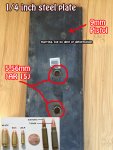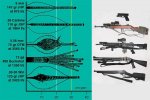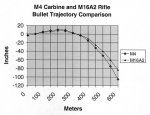Thanks. I will improve my text. What do you think about the simple rule to give weapons an advantage based probabilities curve?
When talking about adding firearms into our games, I've found the biggest error we make is trying to over complicate things. I am super guilty of this myself (it's the data analyst in me, sorry not sorry). Ballistics is a very complicated thing. I've had spreadsheets, data table, etc all to consider the various factors (range, environment, grain weight, velocity, bullet composition, etc, etc). The reality is no one wants to try to factor all that in when playing a game. So while we tend to go as realistic as possible, the reality is we need to keep things simple for actual game play, even if it doesn't mirror in all these other factors.
My suggestion? Don't get crazy with all kinds of damage and variable and/or messing with criticals. Give the weapon a range, which is easy enough because looking up maximum effective ranges is super easy with Google. For instance, most pistol cartridges will only have a maximum effective range of 50 meters, while a medium rifle cartridge like a 5.56 is around 400 meters, and a heavier cartridge like a 7.62 can be 1000 meters or longer. Don't confuse maximum effective range with how far the bullet actually travels. Out past certain distances, bullet drop is massive and you'll never hit your target outside of a miracle. And of course, those extreme ranges would require something like a scope to even see your target. For comparison, at 300m, the average human sized target will appear as big as a pencil lead in your iron sights.
Just assign a basic damage roll. 1d6 for small caliber, 1d10 for medium, and 2d6 for large. Note, damage is not around pistol vs rifle, but actual size of the lead hitting you.
We know that for burst and automatic weapons, they fire more bullets, but each bullet has less chance to hit as the one prior. So my suggestion is to have: burst fire (3 bullets fired) = double damage dice. Automatic fire (5 bullets fired) = triple damage dice
The only special rule I'd have is to account for velocity. Pistol ammunition ignores light armor, and rifle ammunition ignores all armor (see my photo above as to why). I'd rule that only DEX and magical bonuses apply to AC when wearing armor.
That's about as complex I'd get with modern firearms.
As an aside, a sniper rifle is not more difficult to use than any other firearm. Often easier, since there are fewer moving parts. What makes a sniper rifle so deadly is its range combined with the skill of the shooter, not the complexity of the weapon. An AR15 is way more complex than a typical bolt action sniper rifle (unless that sniper rifle uses an AR platform of course)





